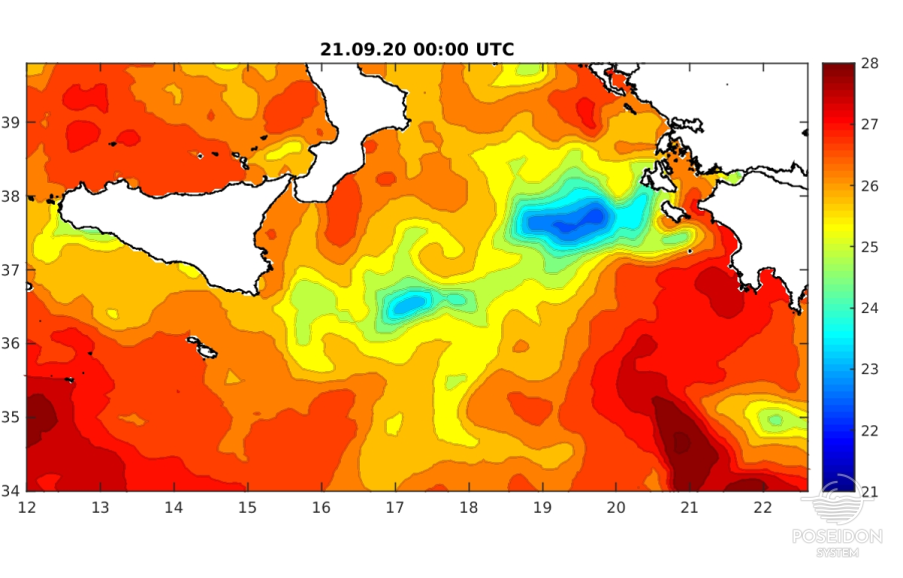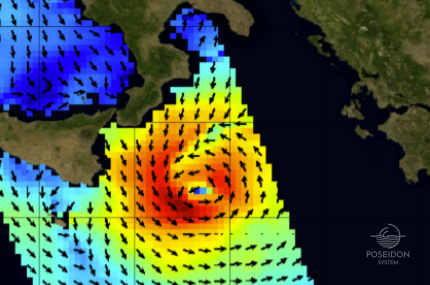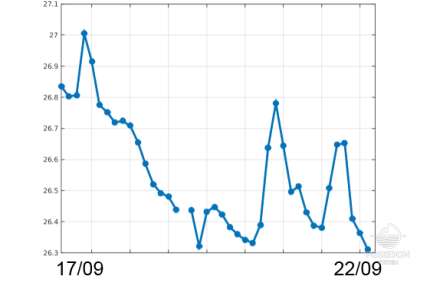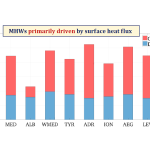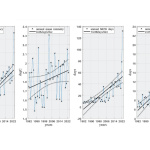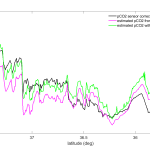The surface temperature variation in the Ionian Sea caused by “IANOS” Medicane
Composed by POSEIDON scientific team
The wind pattern over the sea surface on 16th of September 2020 as sensed by the METOP-C meteorological satellite. Intense red color represents wind speeds over 80Km/h. 24 hours later, the wind pattern, reached the islands of Cephalonia and Zakynthos.
The sea surface temperature decrease caused by the IANOS Medicane along its eastern path over the Ionian sea is clearly demonstrated by the multi-sensor satellite images presented above for the period 17 -22 September at 00:00 UTC. These satellite data are based on the night-time images collected by the infrared sensors on different satellite platforms and are available on a daily basis through the Copernicus Marine Service. The same data are used for the correction through data assimilation and nudging of the POSEIDON hydrodynamics analysis and forecasts. It is worth to be mentioned, that on 17th of September the sea surface temperature in the Western Ionian ranges between 27ο - 28ο C, while the accepted lower temperature limit for the tropical cyclogenesis is ~26.5ο C. Under these conditions, the Medicane is further boosted as it pumps heat and humidity from the sea surface. The observed decrease of the sea surface temperature is due to the intense upward movements in the near surface layers of the water column (upwelling) together with the increased heat transfer from the sea surface to the atmosphere due to the evaporation and sensible heat flux. The intense upward movements in the water column are caused by the spatial pattern of the intensified winds due to the cyclone and reduce the sea surface temperature through the transfer of colder water masses from the deeper layers to the surface.
On September 18th, IANOS caused a temperature drop of 4ο C at the sea surface of the western Ionian while during the next days this temperature decrease was extended eastwards following the Medicane’s path. The maximum observed temperature decrease reached 6οC, on 21th of September west of Cephalonia and Zakynthos islands. The sea surface temperature restoration to its usual climatological values is a process that can last from a few days to a few weeks, possibly affecting also the atmospheric circulation pattern. In the SST satellite maps shown here, the temperature disturbance is still present on 22th of September, while it seems to persist during the following days. Along the western part of Peloponnese, no significant change of the surface temperature was observed, as it can be also seen in the temperature recordings of the POSEIDON Pylos station, which indicate a surface temperature drop of only 0.5ο C the period between 17 and 22 of September.



